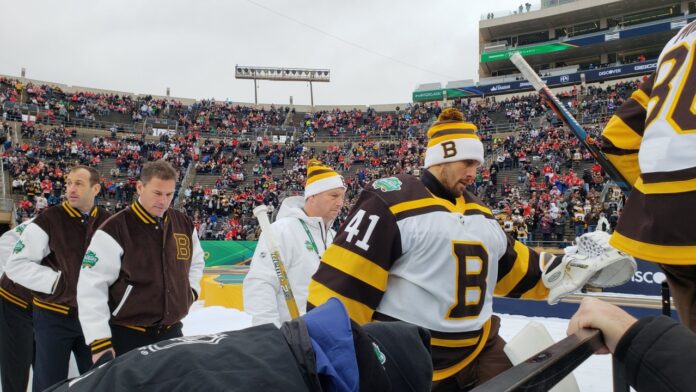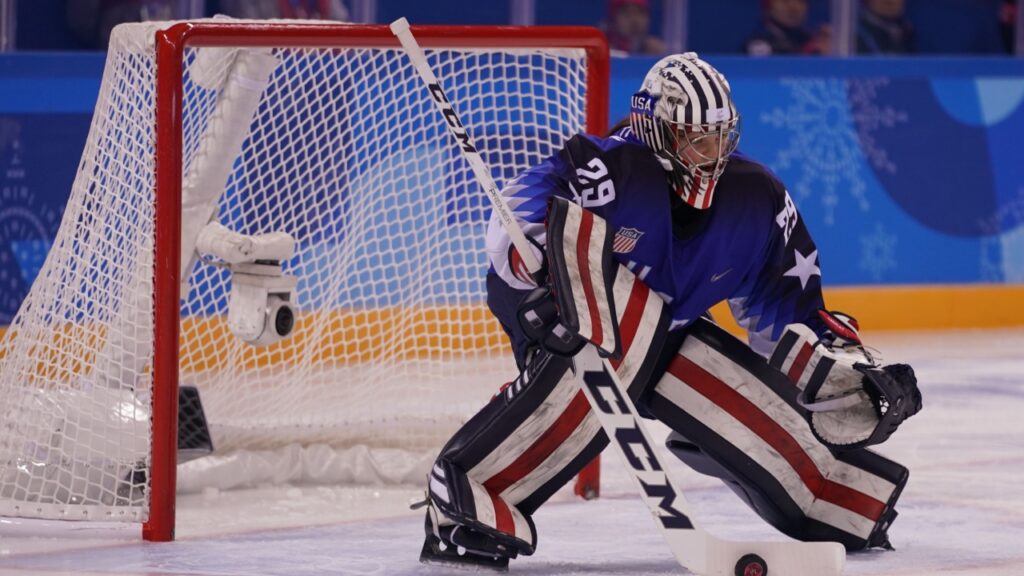
Over the past decade, ice hockey has changed dramatically.
The game has moved from relying mainly on physical strength and big hits to a style that is faster, smarter, and more strategic.
Players, coaches, and teams now focus on how they attack, defend, and transition during play.
This article explores how hockey tactics have evolved in three main areas: offensive structure, defensive and transition strategies, and the influence of analytics and technology.
Offensive Structure And Zone Entry Innovations

Stretch Passes And Speed Through The Neutral Zone
Teams now use long passes to move the puck quickly into the offensive zone. Instead of slowly skating in, players can receive passes at speed, creating chances to attack immediately.
Controlled Zone Entries And Possession Focus
Modern offenses focus on carrying the puck in or making controlled entries rather than simply dumping it into the zone. This helps teams maintain possession and sustain pressure once inside the offensive zone.
High-Danger Chances Instead Of Sheer Shot Volume
Teams aim to create high-quality scoring opportunities rather than just taking many shots. This includes targeting the slot, using cross-ice passes, and taking advantage of odd-man rushes.
Defensive And Transition Strategies

From Neutral Zone Traps To Gap Control
Defensive strategies now emphasize mobility, gap control, and pressuring opponents. Defenders focus on maintaining space, skating effectively, and retrieving the puck quickly after turnovers.
Quick Transition From Defense To Offense
Modern defenses are designed to move the puck quickly after stopping an attack. Teams now train to recover the puck and transition fast into offensive play, making counter-attacks more effective.
Defensemen As Puck Movers
Defensemen are no longer just stay-at-home players. They skate, make passes, and often join the attack, acting as the first line of offense while still fulfilling defensive duties.
Analytics, Technology, And Coaching Evolution
Use Of Data And Performance Metrics
Teams use data and analytics to understand player performance, positioning, and team tactics. This helps coaches make better decisions about line changes, matchups, and in-game strategies.
Coaching Innovations And Training Methods
Coaches now rely on video analysis, performance metrics, and decision-making drills. Player development emphasizes smart choices and situational awareness, not just skating and physical play.
Rule Changes That Influenced Tactics
Some rule changes have made the game faster and more strategic. Stricter enforcement of obstruction and interference penalties has increased the pace of the game and created more space for skill-based play.
Special Teams Adjustments And Modern Power-Play Designs
More Motion And Rotating Formations
Special teams, especially the power play, have changed a lot over the last decade. Instead of keeping players mostly in fixed spots, teams now use constant motion to confuse penalty killers.
Players rotate positions, switch sides, and move into open lanes to create passing and shooting options. This makes the penalty kill work harder and opens space for high-quality shots.
Increased Use Of The 1-3-1 Formation
The 1-3-1 setup has become one of the most popular modern power-play structures. It places one player near the blue line, three across the middle (usually a shooter, a playmaker, and a support player), and one net-front presence.
This formation allows for quick puck movement, cross-ice passes, and one-timer opportunities, especially for players positioned on their off-hand side.
Power-Play Quarterbacks
Defensemen or skilled forwards who handle the puck at the top of the formation act as “power-play quarterbacks.” Their job is to read pressure, distribute the puck, and set up plays.
Over the last decade, these players have become more important because modern power plays rely on quick decisions and high creativity rather than just blasting shots from the point.

Frequently Asked Questions
What is a zone entry, and why has it changed?
A zone entry is how a team brings the puck into the attacking zone. Teams now prefer controlled entries to create scoring opportunities right away.
How did rule changes affect tactics?
Changes that increased speed and reduced stoppages made the game faster and opened space for more strategic play.
What role does analytics play in today’s hockey tactics?
Analytics help teams make better decisions about tactics, player use, and matchups, focusing on possession, scoring chances, and transitions.
Why are defensemen more like forwards now?
Defensemen are expected to join attacks, move the puck, and support breakouts, making them active in both offense and defense.
Has the dump-and-chase tactic disappeared?
No, it is still used in some situations, but it is less common. Teams focus more on controlled entries to maintain possession and create high-quality chances.
Conclusion
- Hockey offenses are faster, more creative, and focused on speed, space, and controlled entries.
- Defenses are more mobile, dynamic, and designed for quick transitions.
- Coaches use analytics, video, and metrics to guide tactics and player development.
- Player roles are more flexible, with defensemen actively participating in offense.
- The game has become smarter and faster, with decisions and positioning as important as physical skill.
Read More
- Greatest Goaltenders In NHL History
- Legendary Captains Who Inspired Dynasties in NHL
- Unforgettable Olympic Hockey Moments For Team USA
This article was made with AI assistance and human editing.



